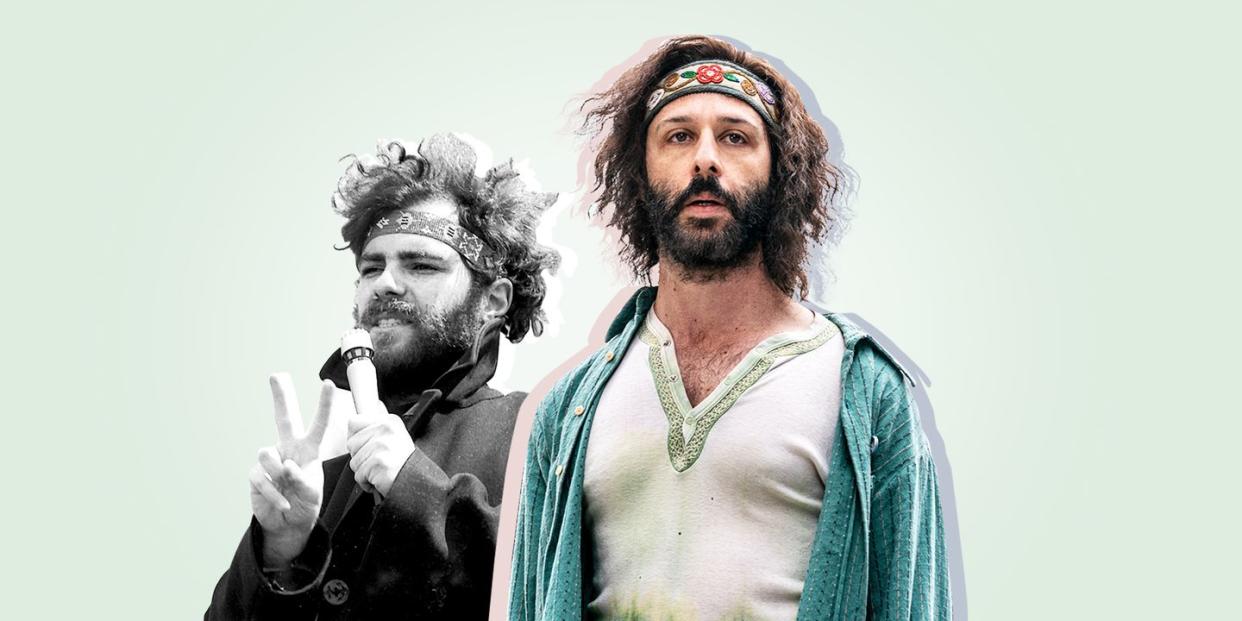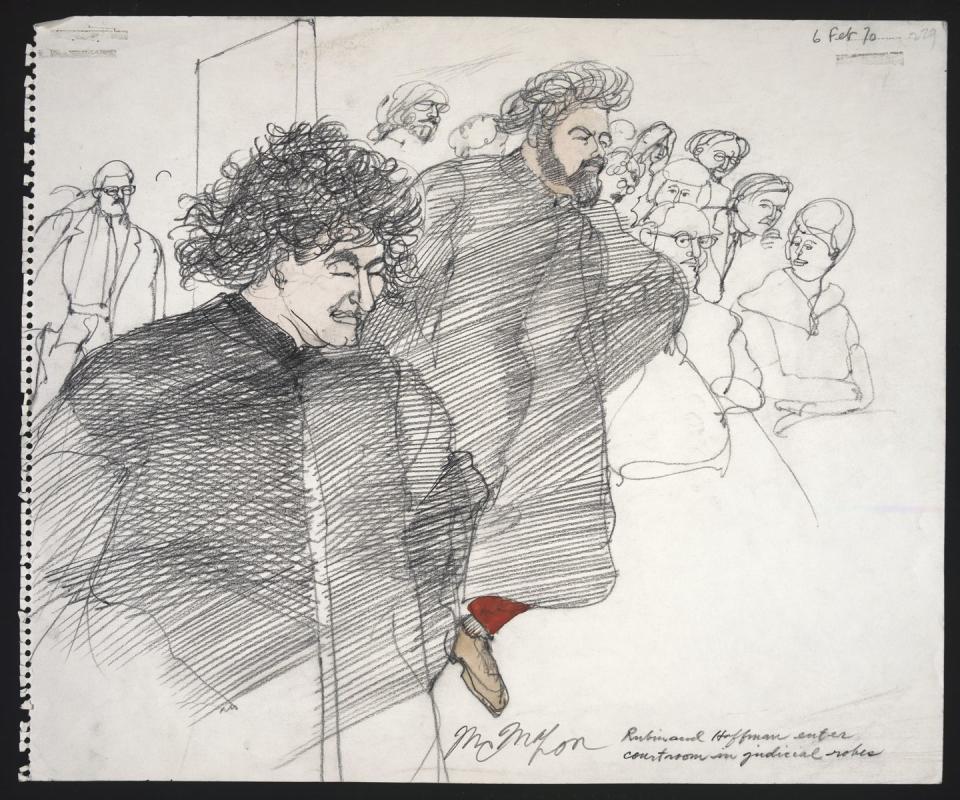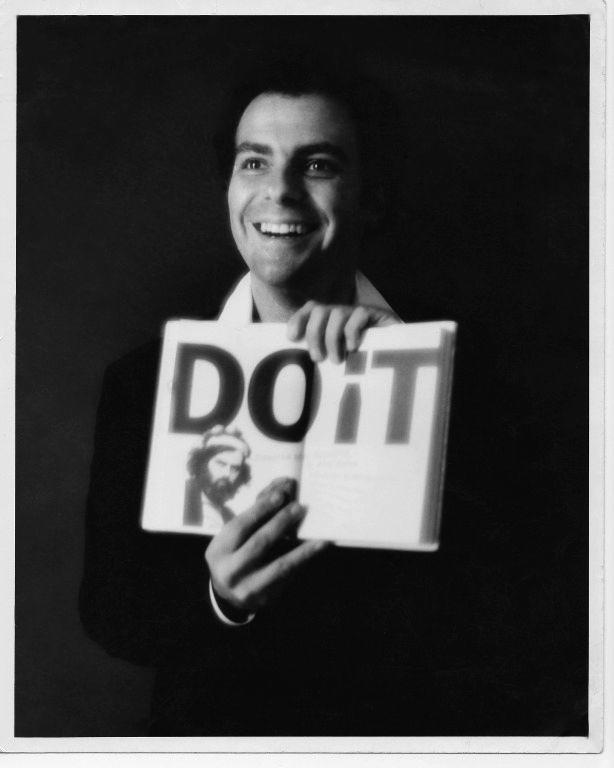After the Events of 'The Trial of the Chicago 7,' Jerry Rubin's Life Turned From Counterculture Activism

- Oops!Something went wrong.Please try again later.
In The Trial of the Chicago 7, we first meet Jerry Rubin as he teaches a group of students how to make a Molotov cocktail with a hint of a smirk. In Aaron Sorkin’s film about the 1968 Democratic Convention, Rubin and Abbie Hoffman are played mostly for comic relief with Jeremy Strong portraying activist Rubin as a stoned, second fiddle to Hoffman.
The Netflix movie focuses narrowly on what led to the riots at the convention and the following courtroom antics, so we’re seeing just a slice of Rubin’s life—though it is the part which brought him the most attention.
Before the six-month trial in Chicago, Rubin was a counterculture star who often said he never “trusted anyone over 30.” And after the trial, his life took several unexpected turns. Here’s what to know about him.
He founded the Yippies.
Rubin, who grew up in suburban Cincinnati, went to graduate school at UC Berkeley, where he became involved in the anti-Vietnam war movement. In the late ‘60s, Rubin founded the Youth International Party, better known as the Yippies, with Hoffman. The activist group performed theatrical demonstrations which led to a lot of media attention.
In August of 1967, Rubin and Hoffman showered traders on the floor of the New York Stock Exchange with dollar bills then set money on fire outside of the Financial Center as a statement on greed. And a couple of months later, they organized a march of approximately 100,000 people in front of the Pentagon with plans to levitate the building as an “exorcism to cast out evil spirits,” according to The Washington Post.
Yes, he did wear a judge’s robe to trial.
That theatricality is portrayed in the Netflix film with actors Jeremy Strong and Sacha Baron Cohen frequently interrupting the proceedings and even showing up to court one day dressed like the judge. That really happened. Rubin and Hoffman wore judge’s robes to trial and when they were ordered to disrobe, they revealed cop costumes underneath.

Rubin’s life after the trial isn’t what you’d expect.
After the trial in Chicago in which he was found guilty of incitement, Rubin’s life took a few unexpected turns. The fame he gained from the various protests he led and the trial in Chicago left Rubin feeling burnt out. He moved to California to work on his self discovery, which included acupuncture, mind control, meditation, and various types of therapy. He became obsessive about health food, drinking so much carrot juice it turned his legs orange, he claimed in his book about the journey called Growing (Up) at 37.
Then Rubin—the same man who wrote in his book Do it! "All money represents theft. To steal from the rich is a sacred and religious act. To take what you need is an act of self-love, self-liberation. While looting, a man to his own self is true!"—went on to work on Wall Street in the early 1980s. In 1981, he told a Washington Post reporter his new priorities were money and power.
In 1978, he married Mimi Leonard, a commodities futures trader who he met two years earlier at a cocktail party in Manhattan, according to a People profile from that time. “It’s a misconception that Mimi got me to go straight,” Rubin told the outlet. “She’d have been willing to lead a more hippie-ish existence, but I’m either too ambitious or too bored for that.”
The couple, who went on to have two children, wrote a book together which came out in 1980 called The War between the Sheets, in which he writes about his own “sexual inadequacies,” according to the Kirkus Review.
After Rubin’s stint on Wall Street, he made a name for himself hosting “networking salons” in his Manhattan apartment before eventually moving to Studio 54.
In 1991, Rubin moved to Los Angeles where he became a spokesperson for a nutritional drink called Wow!. ''I am a man with a mission,'' Rubin told the Chicago Tribune at the time. ''My mission is to bring nutrition and longevity to millions of people through a nutritious drink.''

He died after being hit by a car.
Rubin died in 1994 after getting hit by a car while jaywalking across Wilshire Boulevard in Los Angeles. After suffering several injuries from the hit, the official cause of death was cardiac arrest.
“He was a great life force, full of spunk, courage and wit,” fellow member of the Chicago 7 and then-California Senator Tom Hayden told the Los Angeles Times about Rubin’s death. “I think his willingness to defy authority for constructive purposes will be missed.
“Up to the end, he was defying authority.”
You Might Also Like

